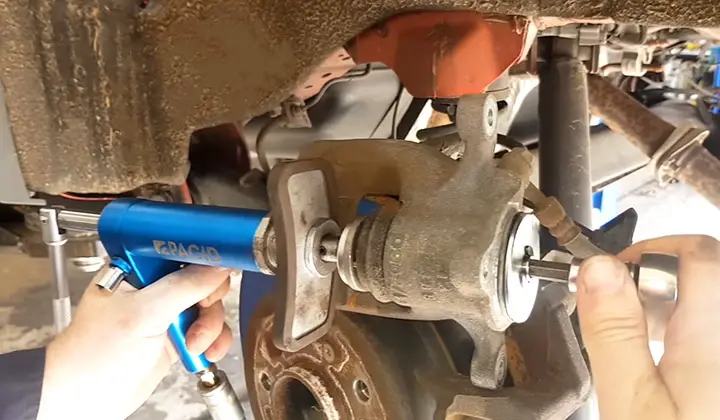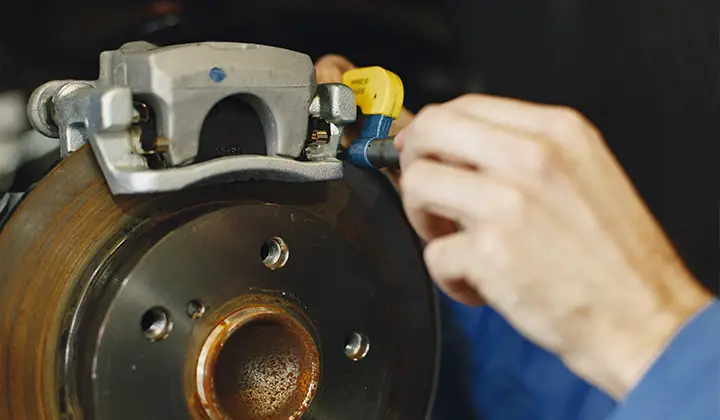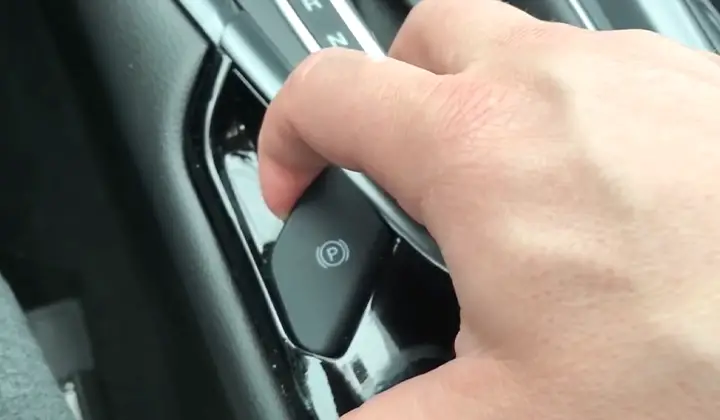Changing brake pads on your car can be a DIY job with the use of an electric handbrake. Follow these simple steps to change brake pads without any trouble:
Make sure that you have the right tools, including a wrench and some locking pliers.
First, remove the old pad by unscrewing it from the rotor disc assembly using your wrench and locking pliers
Next, put in the new pad by screwing it onto the rotor disc assembly until it’s flush with both surfaces.
Finally, reattach all of the bolts and tighten them up using your wrench
Contents
How Do You Change Rear Brake Pads With Electric Handbrake
If you’re having trouble using your electric handbrake, you may need to replace the pads. Follow these simple steps to change them:

Open the door
To change the brake pads, you’ll first need to open the door and remove the rear bumper cover.
You can then remove four screws from the edge of the brake pad bracket and pull it off of the brake pad. Finally, replace your new brake pads and close up your car’s doors.
Remove the Rear Brake Pads
To remove the rear brake pads, first, loosen the screws that hold them in place and then pull them off of the rotors. Be careful not to pinch your fingers when removing these screws.
Remove the rear bumper cover
The first step is to remove the rear bumper cover. This will give you access to the brake pads and bracket.
Remove four screws from the edge of the brake pad bracket
Next, you’ll need to remove four screws from the edge of the brake pad bracket. These screws hold everything together so be careful not to lose them.
Pull bracket off brake pad and discard it
After removing the screws, you can easily pull off the old brake pads and discard them in a trashcan or recycling bin.
Clean and Lubricate Rotor Ends
Once the brake pads have been removed, it is important to clean and lubricate both rotor ends. This will help reduce wear on your brakes and prolong their life.
Replace new brake pads
Now that your brackets and braces are removed, it’s time to replace them with new ones.
Install New Brake Pads
Now that all of the parts are cleaned and lubricated, it’s time to install new brake pads onto your vehicle’s rotors.

To do this, simply slide each pad onto one end of a rotor while holding down either side of its adhesive strip with a pair of pliers or forceps (depending on how wide the pad is).
Make sure to line up the contours of each pad perfectly before tightening down any screw(s) that secure it in place.
How Do Electric Emergency Brakes Work
When you hit the gas pedal and your car starts moving, this causes the engine speed to increase which also increases the power behind your brake pads.

The higher engine speed overrides the power supplied by your electric emergency brakes and keeps them from working properly in case of an emergency situation such as hitting someone or pulling out into traffic quickly.
Electric emergency brakes are a type of braking system that uses electricity to stop your car.
This system is usually activated when you hit the brake pedal hard enough to make the wheels start spinning, but before they actually come to a halt.
When You Should Change Rear Brake Pads
If you’re noticing a lot of squealing or grinding when you brake, it might be time to replace your rear pads.
The discs on the back of your car use friction to stop them from spinning and causing accidents. Over time, the pads can wear down and become ineffective.
Your brake pads should be replaced every 80,000 miles.
It’s important to change your rear brake pads every 3-6 months, depending on how often you use them.
Brake pads are responsible for slowing down or stopping the car when you apply pressure to the pedal. If they become worn or damaged, this can cause the brakes to work less effectively and potentially fail altogether.
You Notice a Lack of Brake Feel
If you notice that your brakes don’t feel as strong as they used to, it may be time to replace the pads and discs on your vehicle.
Over time, brake pads can wear down and become ineffective. This will cause a lack of braking power when you need it most, which can lead to dangerous situations.
Your Brakes Are Squealing
If your brakes are squealing, it means that the rotors are not turning at a high enough speed. This can result in decreased stopping power and increased pedal effort required to stop the car.
It is important to have your brakes checked by a mechanic if this issue persists for more than two weeks or if the noise becomes too loud for comfort.
There Is excessive Noise When Stopping or Parking
When you apply pressure to the brake pedal, there should be no audible noise coming from the system – unless there is something wrong with either the rotor or caliper pistons (the parts inside of each wheel).
If you hear significant noises coming from your rear wheels while braking, it could mean that one or both of these components needs replacement – usually at an expensive cost.
Pads Wear Down Quickly Near the Rotors
As mentioned above, brake pads work together with rotors in order to create friction against the ground and bring Stop.
In fact, once every six months should be about how long most drivers keep their front and rear sets of pads installed without doing any maintenance on them (such as oiling them). Sometimes, changing brake chamber also necessary.
However; if heavy usage occurs (i. e., frequent parking near curbs), then worn-down pad material will rub directly against those spinning disks – quickly wearing them down until they need replacing altogether.
FAQs
Can You Pull E-brake Too Hard?
The e-brake can be pulled too hard, which will cause the car to go forward and crash.
How Many Clicks Should a Handbrake Have?
The number of clicks needed for your car depends on your driving style and preference.
What Happens if You Pull Handbrake Too High?
If you pull it too high, you may cause damage to the car’s drivetrain and chassis.
If this happens, your car will not be able to move forward or backward properly, and you will have to use a tow truck for help.
Conclusion
If you have an electric handbrake, the process to change brake pads is a little different than if you use a regular mechanical brake system.
First, remove the rear drum by removing the four screws that hold it in place
Second, using an electric screwdriver or Allen wrench remove the old brake pad from inside.
Third, insert a new brake pad into the drum and tighten down screws with your appropriate tool – be sure to Torx-type bits are compatible with your car’s hardware.
Finally, reinstall the rear drum and reattach the screws.
